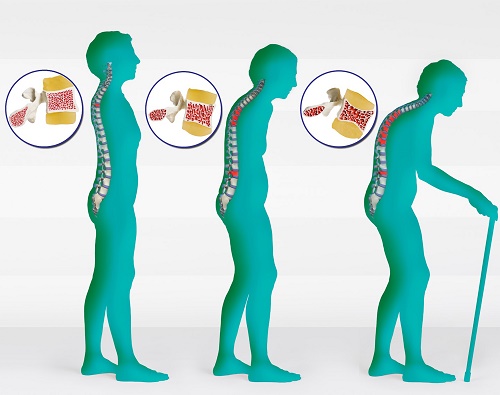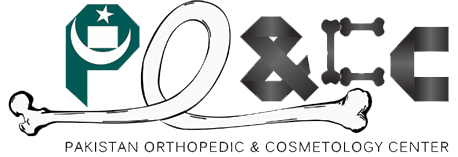BHC is unique to this area in that it combines the strengths and resources of prominent medical professionals, the skills of technical personnel, and patient care services for the whole region.
BHC is the only facility providing state of the art services both to public and private sector with in the region of KPK of Pakistan, at large.
POACC is the pioneer in providing DXA scan facility, bone markers and specialized metabolic bone disease laboratory investigations, experienced dieticians, counseling of patients and reporting on fracture risk assessment for the country by certified clinical densitometrists.
Here, patient care, education, training and research come together resulting in exceptional health care in most conducive environment of Bone Health Center, Pakistan.

Bone Health Center
We are proud to share with you the launch of the first and the latest DXA Scanner in Peshawar, Pakistan. It is the only of its kind in Pakistan with all the latest advancements in bone densitometry. We are committed in providing a high standard of service to you and the highest quality bone densitometry for patients by our Bone Densitometry Team. As you know central or axial skeleton DXA is the gold standard for diagnosis of osteoporosis. The test assesses both global fracture risk and site specific fracture risk, identifies which patients can benefit from medications and is used for follow-up monitoring. On the other hand screening peripheral scanners can only be used to predict global fracture risk and cannot be used for monitoring osteoporosis treatment. First time in Pakistan, quality reporting on the printout results of DXA scan is provided by our Certified Clinical Densitometrist. Our location is the most suitable one in the city for your patients with easy approach, ample car parking facility and patient transportation is available at the state of the art Deans Trade Centre, Peshawar. The working hours are: 10 AM till 6 PM except Sundays and Pakistan national holidays. Without your keen interest, input and cooperation, Bone Health Centre (BHC) will not be able to achieve its mission to enhance knowledge and quality of bone densitometry among healthcare professionals, provide continuing education courses for clinicians and technologists, increase patient awareness and access to bone densitometry, and support clinical and scientific advances in the field. TF 127 Deans Trade Centre, Peshawar. Director: Senior Densitometry Technologist: Junior densitometry Technologist: Secretory: Clinical Research Assistant: Densitometry Fellow: PATIENT INFORMATIN on Bone Density Testing: Overview Things to know before your test What is the DXA procedure like? What should I do before the test? How and when will I get the results? Comparing Current to Previous Bone Density Tests Bone density can be measured by other techniques including by CAT scan of the spine or with other types of bone density tests of the heel, finger or forearm. Comparisons cannot be made between DXA bone density values of the spine or hip and any of these other tests. Who Can Benefit?
Our top of the line Central DXA Scanner (LEXXOSS) with the latest FLASH (Cone) Beam Technology is the first in the new class of breakthrough DXA scanners with the shortest acquisition time and highest precision.
For more information on DXA scan and bone densitometry and related scientific literature, please contact Bone Health Centre, at:
Phone Number: 0092-91-5250067, 0092-3015943329
Email: bonehealth@gmail.com
Dr. Khaqan Jahangir Janjua FRCS, CCD
Dr. Fateh Ali Janjua. MBBS, MRCS 1, FCPS 1
Mr. Faizan Ali Janjua. MBBS, FCPS 1
Mr. Nasir ud Din Shah
Mr. Wasif Ali Janjua
Dr. Fateh Ali Janjua, MBBS
Bone density testing is performed by a simple, painless procedure called DXA (dual energy x-ray absorptiometry). In this test, a weak x-ray beam is passed through the bone in the spine, hip or other skeletal site. The amount of x-ray that passes through is measured, and provides a very accurate determination of the calcium content of the bone. Bone density measurement can determine the presence and the severity of osteoporosis and can be used to predict the future risk of developing osteoporosis and fractures.
Bone density results are usually expressed as ‘T-scores,’ which are derived from comparisons to values seen in young normal adults. Healthy young women have bone density T-score values between -2 and +2. Postmenopausal women with values between -1 and -2.5 are said to have low bone density. Low bone density values do not necessarily mean that bone loss has occurred. They may be the result of a lower-than-average peak bone density, perhaps due to genetic inheritance.
Values less than -2.5 are associated with an increased fracture risk, and at this level the diagnosis of osteoporosis is made. We can also compare a bone density result with the values we expect in other women of the same age. Because of the bone loss seen with growing older, women over age 75 often have osteoporosis (T-score less than -2.5) despite the fact that their values are within the range expected for their age.
Bone density testing can also be used to monitor the effects of medical problems on bone health or of treatment for osteoporosis. The effectiveness of treatment is best monitored by measuring bone density when treatment begins and again after one or two years of therapy.
Bone densitometry using DXA involves lying on a padded surface with a pillow under your head. For the hip scan, legs are extended with the feet held in a positioning block. For the lower spine scan, legs are elevated on a cushion. Each scan takes five to ten minutes. There is no discomfort, and there are no injections or special dyes.
The results of the exam will be interpreted by a physician who specializes in osteoporosis. The DXA results along with the interpretation report will be delivered to you or your physician as desired at the time of history taking by our nurse practitioner.
One of the important uses of bone densitometry by DXA is to monitor changes in bone density over time. If you have had a previous study in our laboratory, the DXA machine will automatically make a comparison with your previous results by making a graph.
Comparing bone density results between different DXA bone density machines is a more difficult challenge. If you have had a previous hip or spine bone density test by DXA and would like us to attempt to compare your current test with previous results, you must provide us with copies of the following:
– Printouts of the actual hip and spine bone density results
– The physician’s interpretation of those results
You can obtain copies of these results from your previous bone density laboratory. It would be most efficient if you bring that information with you at the time of your test. Alternatively, you can arrange for your previous bone density laboratory to mail those results directly to us as follows:
Bone Density Records
Bone Health Centre,
TF 127, Deans Trade Centre
Peshawar 25000, NWFP, Pakistan
Individuals at high risk for osteoporosis, in particular postmenopausal women and elderly men and women, can benefit from prevention and early detection. These include:

